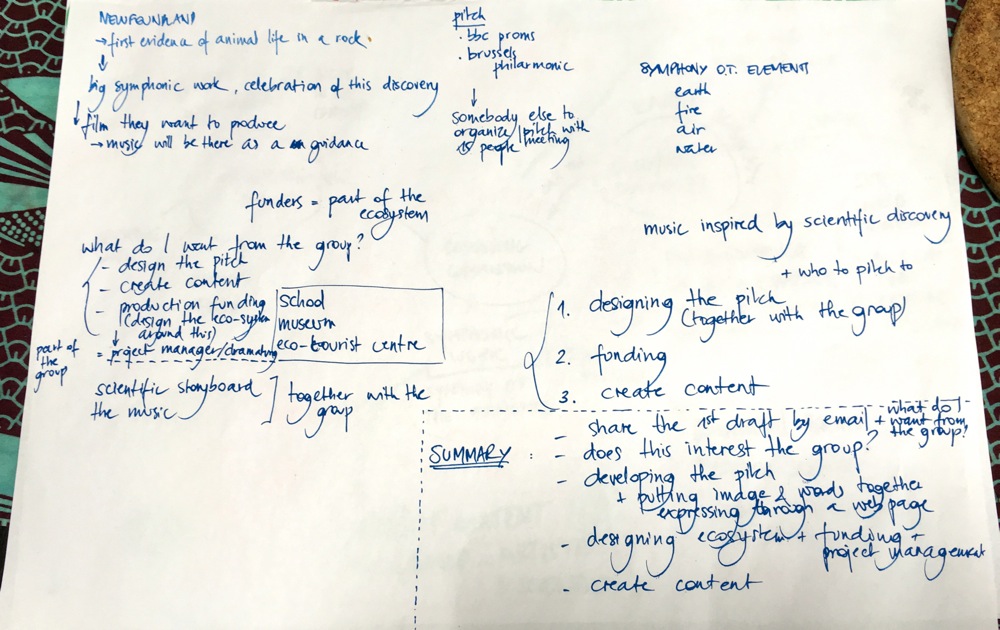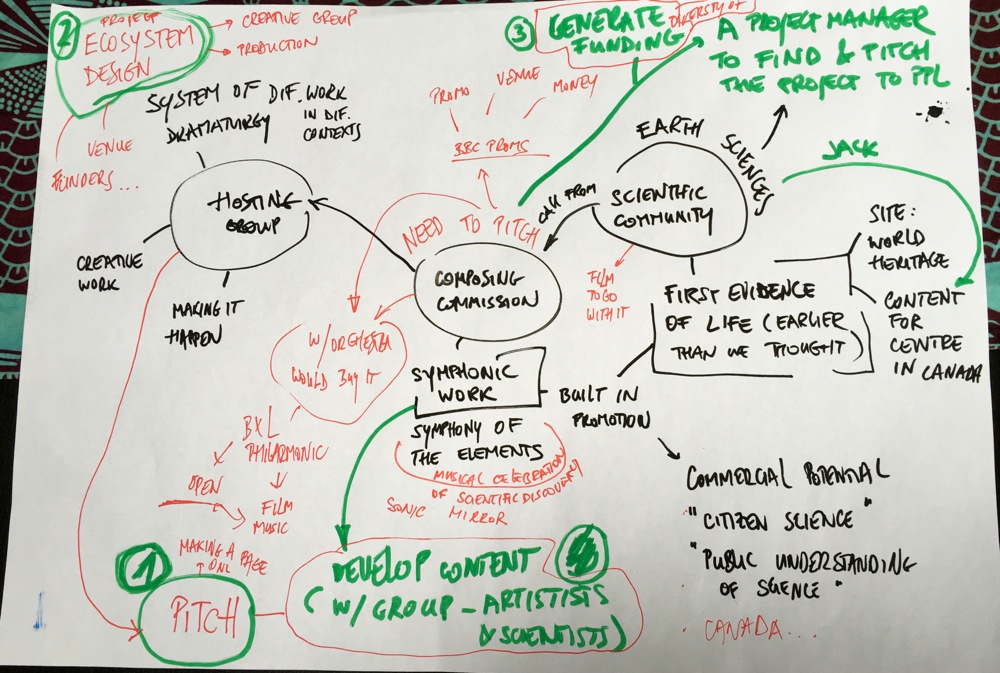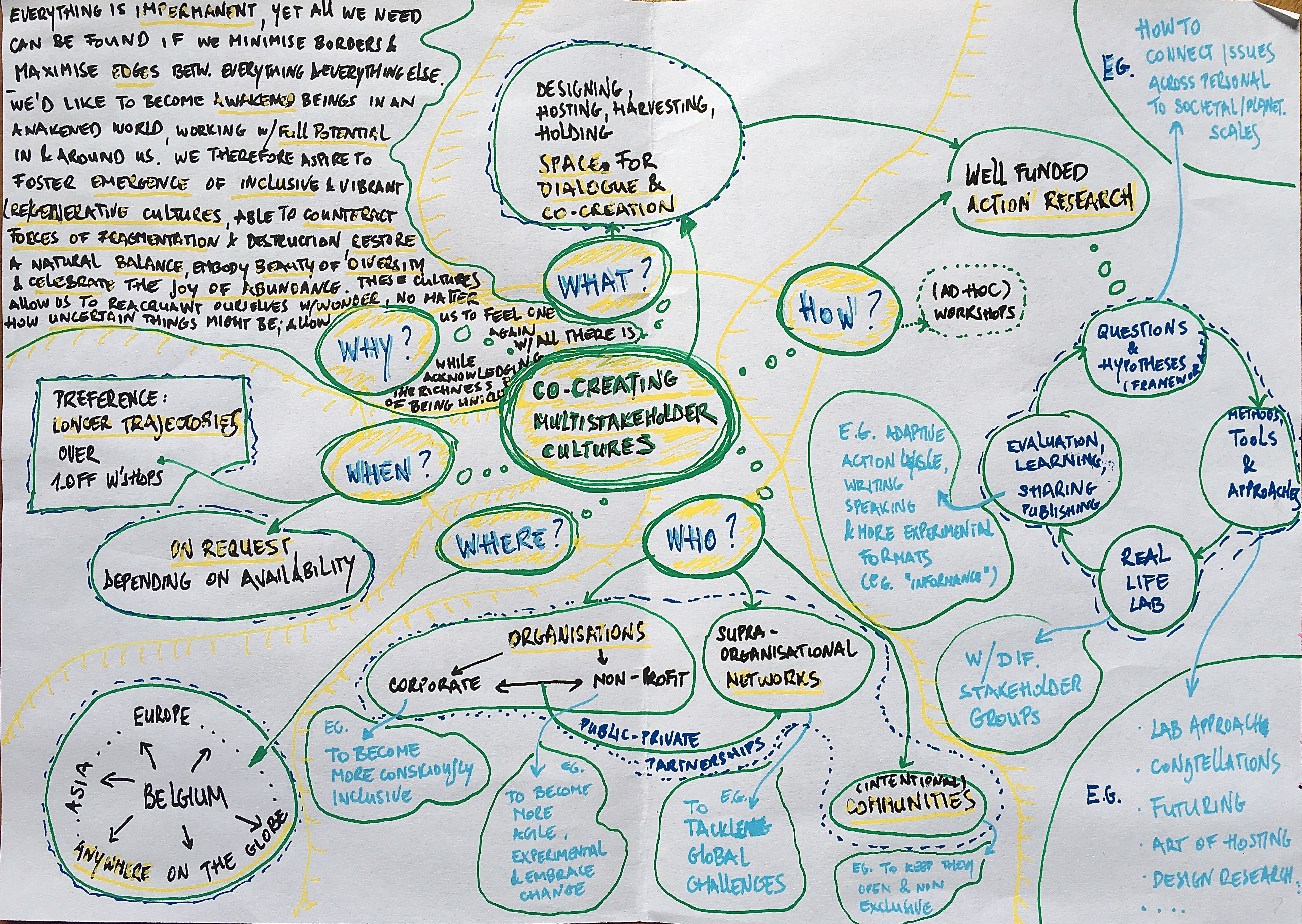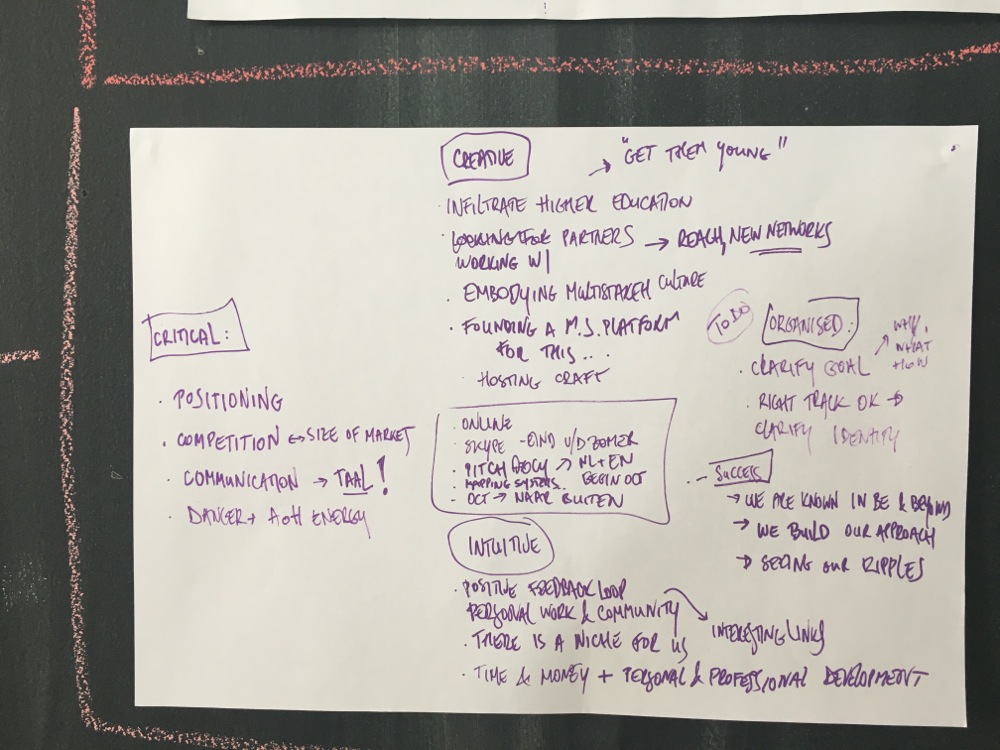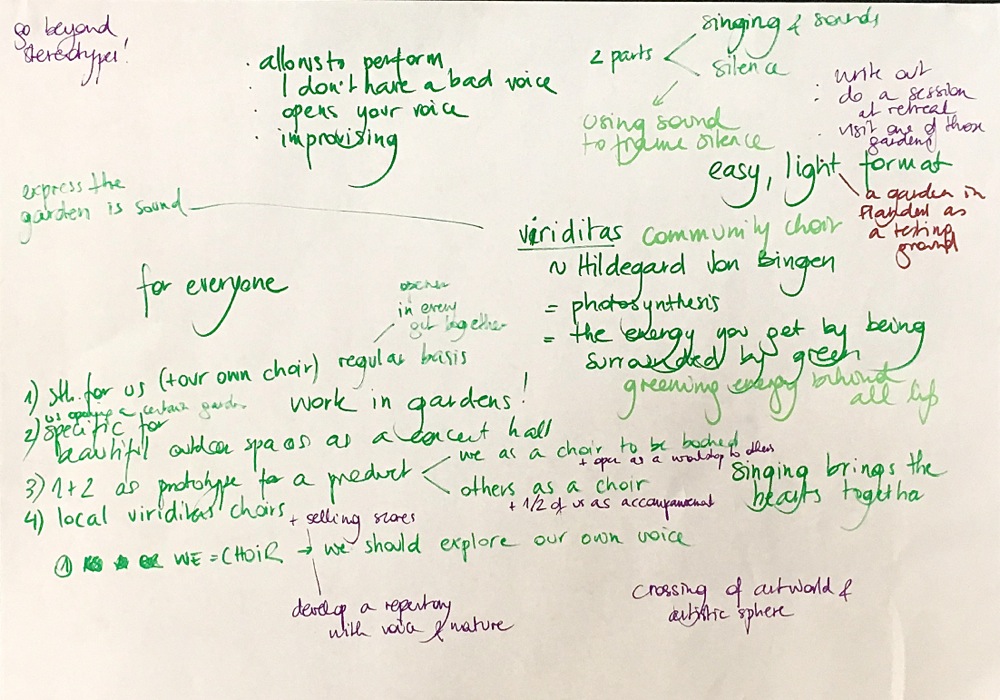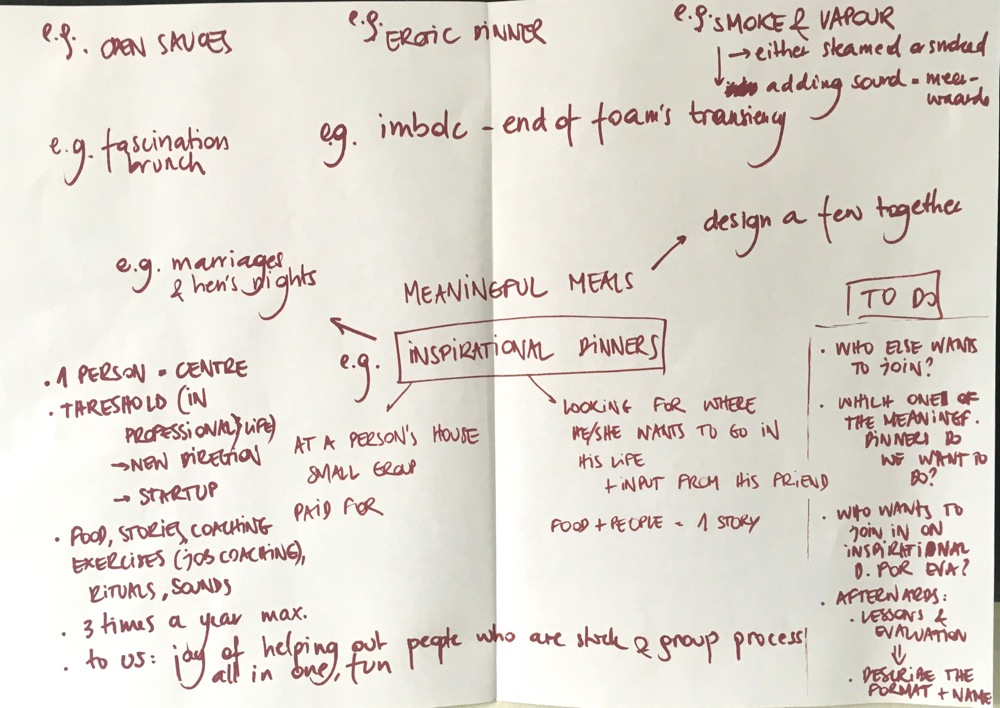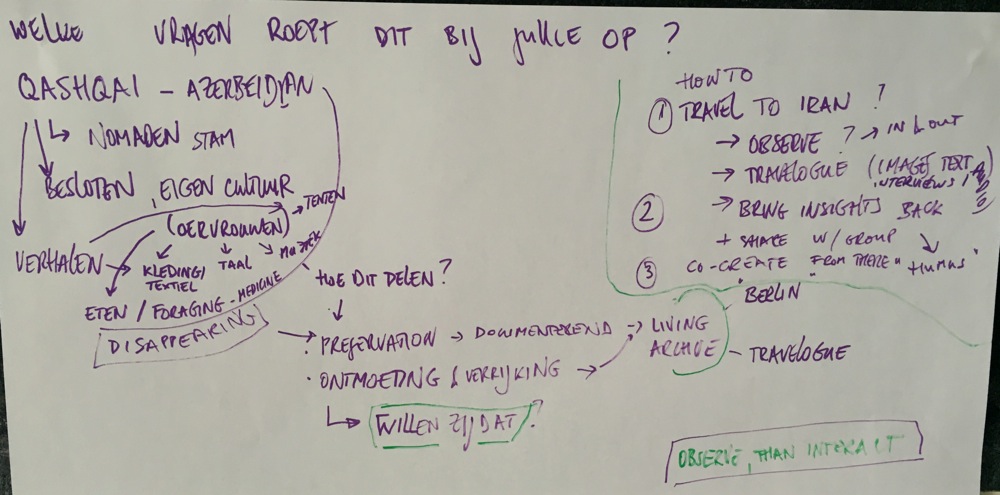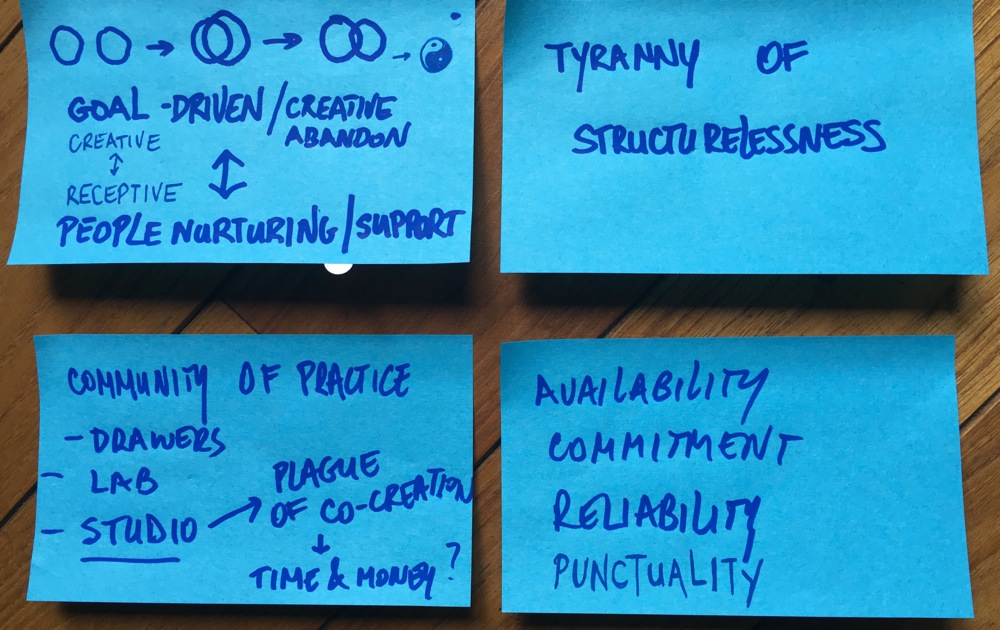This is an old revision of the document!
Hosting community Open Space
7th July 2016 @ FoAM BXL
Core question: “How can we develop our practice?”
→ “Practice” could mean a specific activity, a working group, a thematic strand, a hosting experiment - anything that the community could co-create or support. Remind yourself of the activity mapping, as discussed in the previous gathering.
Flow: Open Space, on our blackboard
Framing: In this gathering, rather than talking about how the community could work - we are trying it out - in practice. Anyone who would like to discuss, test, or co-create an activity can host a session, lasting from 30-60 minutes. In Open Space anyone can become a host. If you'd like to host a session, you can design it as you like. It could be a conversation, exercise, test, mentoring, design, or anything else - the more different formats, the more refreshing the gathering will be. When proposing the session it can be useful to let the other participants know:
- what is the session about?
- what do you aim to get out of the session?
- what will be the format of the session)?
Resulting schedule for the day (with a check-in and warm up beforehand, and a check-out and meditation afterwards):

Re-treat
Charnia
Multistakeholders
Viriditas choir
Inspirational Dinners
Nomads Land
Conundrums
Unstructured groups may be very effective in getting women to talk about their lives; they aren't very good for getting things done. It is when people get tired of “just talking” and want to do something more that the groups flounder, unless they change the nature of their operation. Occasionally, the developed informal structure of the group coincides with an available need that the group can fill in such a way as to give the appearance that an Unstructured group “works.” That is, the group has fortuitously developed precisely the kind of structure best suited for engaging in a particular project. While working in this kind of group is a very heady experience, it is also rare and very hard to replicate. (…) Once the movement no longer clings tenaciously to the ideology of “structurelessness,” it is free to develop those forms of organization best suited to its healthy functioning. (…) Mostly, we will have to experiment with different kinds of structuring and develop a variety of techniques to use for different situations. (…) But before we can proceed to experiment intelligently, we must accept the idea that there is nothing inherently bad about structure itself – only its excess use. Tyranny of structurelessness by Jo Freeman

